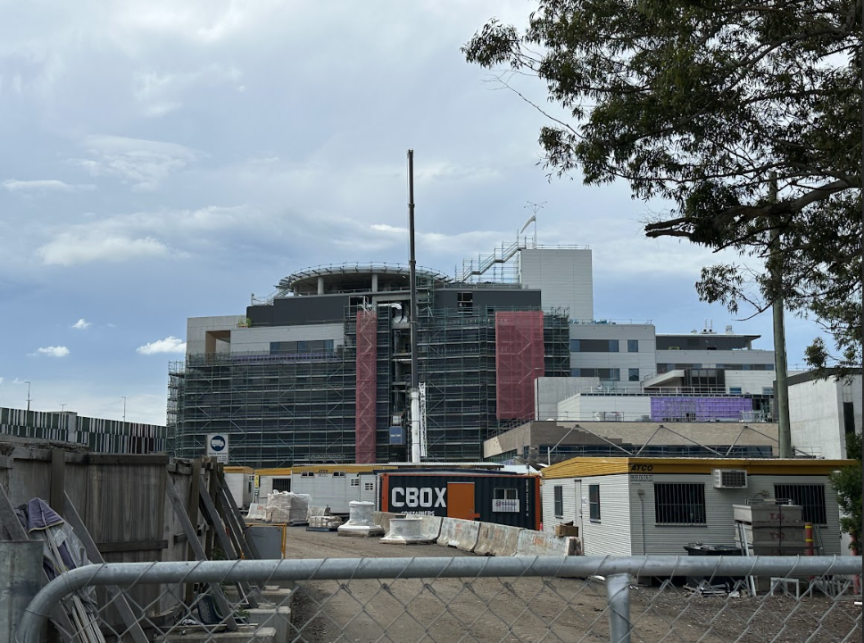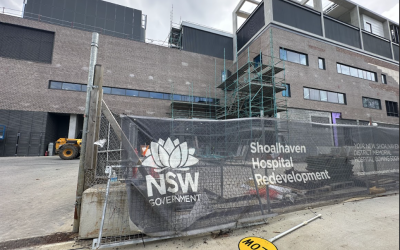Now that the Sydney and Melbourne property booms are over… many investors are wondering what next for property markets?
Add the fact that finance is not as easy to get is it used to be with the royal commission currently making the banks tightening their lending criteria and you would be right to assume that not all markets will grow equally in coming is ahead.
At the same time we all know it makes sense to buy when others are not buying – the often quoted saying from Warren Buffet applies equally to the stock market and property too “be fearful when others are greedy and greedy when others are fearful” (for more on this see previous blog article HERE)
The thing is that whilst all investing (housing, shares, any market you care to participate in) contains inherent risk… so does NOT investing. The doomsday prophets have predicted crashes every year for decades, and listening to them over that time would have proved very expensive indeed. Avoiding the markets for decades would have exposed the cautious cash investor to a 100% risk of having their capital eroded by inflation AND missing out the lost gains from never having been in the growth market. That is costly advice.
So…if you do want to be in the housing market, how do you actually make choices about where to buy in a climate that has a bigger than average dosage of fear? How do we narrow the options and stack the odds in our favour?
Some people watch interest rates, tea leaves & the media to guide their property investing decisions, with very mixed results. There has to be something more substantial than that surely?
One way that has worked well for investors down through time is to follow the infrastructure. Simply put, look for major projects that have impact on property markets and by the close proximity to them. Historically that has meant better than average returns whilst the improvements are being built and priced into the local market over a period of a few years.
It’s actually quite simple… Real estate performs in response to supply and demand, this actually occurs at a very local level… So even though the sentiment in the national media might be hot one day and cold the next, the actual price of a house in spot X isn’t determined by the media at all. It is governed by the number of families willing to part with money in that particular spot at that particular time. Stop. Go back a re read that sentence again. This is the bedrock of all investing. Seeing THROUGH the media and sentiment to recognise true supply and demand is essentially the core skill that renowned investors like Warren Buffet demonstrate, and why they look so wise in hindsight.
Infrastructure projects are real. They create increases in jobs and economic activity, and can improve lifestyle or increase efficiency of travel in certain areas. These increases and improvements can flow through into the price of land.
Its common sense really, even though it is not common at all. Imagine your own suburb, consider if a new train line was installed straight through the middle of the suburb… the train station Direct to the CBD in brackets sort of jobs was all of a sudden five minutes walk from your house. Ignoring your own emotional reaction to the increasing traffic and busyness in your area, that kind of infrastructure is normally going to increase prices because there will be an increase in people willing to buy Close to a train station… it’s very efficient form of transport it makes people’s lives easier as they can travel to work without dealing with traffic.
Now currently on the south coast it’s not a train but a road. In fact 4 sections of the same road. The princes Highway at Albion Park, Berry, Berry to Bomaderry and Nowra. When it comes to regional areas, any reductions in the tyranny of distance also flow into land prices. Infrastructure like roads influence demand in the same way that increasing the size of a pipe increases water flow, and that pushes prices.
What is happening in the areas surrounding Sydney in 2018 and beyond? The government has already predicted and pre-empted the slow down in the housing markets (their best tax revenue generator) and has begun planning a major combination of infrastructure projects to stimulate the economy, provide jobs, and improve future amenity for our population of the future.
The south coast is currently seeing the biggest expenditure on road improvements in decades. The Berry Bypass was recently completed at a cost of $580 million. The Berry to Bomaderry upgrade is now underway at $450 million. The Albion Park bypass will cost $630 million and bypass 16 intersections. The Nowra bridge has been confirmed at $310 million and will greatly ease local congestion.
Each of these sections is noteworthy on their own, but when combined over the next 5 years we will see the drive from Sydney become significantly quicker, safer, and consequently more people will visit and move to what is already a more visited tourist destination than the gold coast.
When you fix a narrow winding road from a really large population area, you effectively increase the size of the funnel people can flow from the large area (Sydney, Canberra, Melbourne) to the small area (lifestyle destinations within 2-3 hrs of the aforementioned cities). Increasing the size of the funnel can double or triple the number of people arriving in small destinations which puts a disproportionate pressure on the local housing market. If there is no increase in supply then prices are the only place left to absorb the pressure. When that happens capital gains are well above average.
What about jobs? 2 Comments. First: Baby Boomers don’t need them. Baby boomers are finally fulfilling the prophetic sea change that has been talked about for over a decade by demographers like Bernard Salt after rebuilding their super funds post GFC and bolstering their home values in the recent boom. They are no longer tied to CBD jobs and are free to relocate as they wish. Economists tell us that every 1 permanent relocation to an area can create as many as 7 jobs. Boomers need houses. This creates a Trade shortage. This also increases demand on local health facilites, creating nurse and Dr positions. It fills the schools with the children of tradesmen & women, increasing funding for teaching positions. Some of the South Coast schools are literally bursting at the seams.
Second: The internet is making jobs more mobile. Younger families are also moving. The NBN has allowed more and more of us (the author included) to work remotely and sever permanent ties with capital cities. Digital nomads are exponentially increasing globally and the South Coast is no exception. People living in Huskisson can write software for a company in Singapore and a young coder in Mollymook can fulfill a contract to Sydney, Canberra, Melbourne or Silicone Valley.
To top that off Nowra – the Shoalhaven’s northern population hub has been quietly increasing the size and scope of its Naval forces and in recent years approximately $1billion has been spent at HMAS Albatross. Several thousand employees and contractors call Nowra home.
Just up the road the Shellharbour Marina is a $2 billion project that is changing the image of the former working class area just south of Wollongong into a desirable boat-centric destination. Property prices and population numbers are booming around the high profile development.
All the South Coast doesn’t have is a mining boom. The fact we didn’t have mining insulated us from previous market gains when the mining boom was running meant we started with a lower price base in our real estate markets. This also kept rents from running up into the unsustainable highs of other regional areas. All in all our markets were stable and boring for the entire decade preceding 2015. The growth of recent years is a very recent phenomenon and may herald the start of a very different era.
In aggregate the above infrastructure projects total over $5 billion. In a property market characterised by geography that will not be used for housing (national parks, the coast, and escarpments) with only a few hundred thousand people…. the impact of all those improvements is being, and will be felt in house prices.
When added to our obvious natural assets, the fact we are already a highly desirable tourist destination, and the demographic shift towards a favourable retirement lifestyle we have a perfect storm for capital gains.
This is a demographically led population boom with a technological twist that is being supported by infrastructure. The money is being spent, the people are arriving and the transformation of our region is underway, like it or not.
Warning: The area will not grow uniformly, some areas will outperform others and you need quality research to understand which areas are growing in what order and by what magnitude. Suburb and street level research becomes more important than ever when discerning buyers like Baby Boomers are selecting their preferred locations.
Getting local experience on your side will even the score but ensure you are not employing anyone with a conflict of interest. If the price of good advice seems high remember that the price of free advice will often be much much higher in poor asset selection and years of regret.
What could be the outcome of getting in on this trend early? Getting investment grade properties in quality locations at fair or better prices stacks the odds in your favour to reap the benefits of this next property wave.
The next 5 years in property in Australia are not going to be the same as the last 5 years. You need a different system to profit from real estate than buy in a capital city and hope. Until you have an evidence based approach to selecting investments you will have patchy (or worse) results and be at the whim of lady luck. Markets reward those who are brave enough to see into the future. When a region like ours is a place everyone wants to come for holidays, isn’t it only logical to think that as transport and technology improve that we will choose where we live based on how we like it, not whether it is close to our place of work?
The opportunity for those with vision is to own properties that in a decade will be vastly more expensive and looking back prices will seem ridiculously cheap in hindsight. Further it is also totally possible to move to one of the most idyllic places on earth and be a short drive from our nearest capitals, Sydney and Canberra. For those willing to invest, develop, or move to the South Coast the future may be a bright jewel of opportunity at a time when the general sentiment is depressed.
The author has no regrets since we moved here from Sydney 10 years ago and he can’t think of a better place to be.
I guess that makes him biased – but hopefully for all the right reasons 🙂





